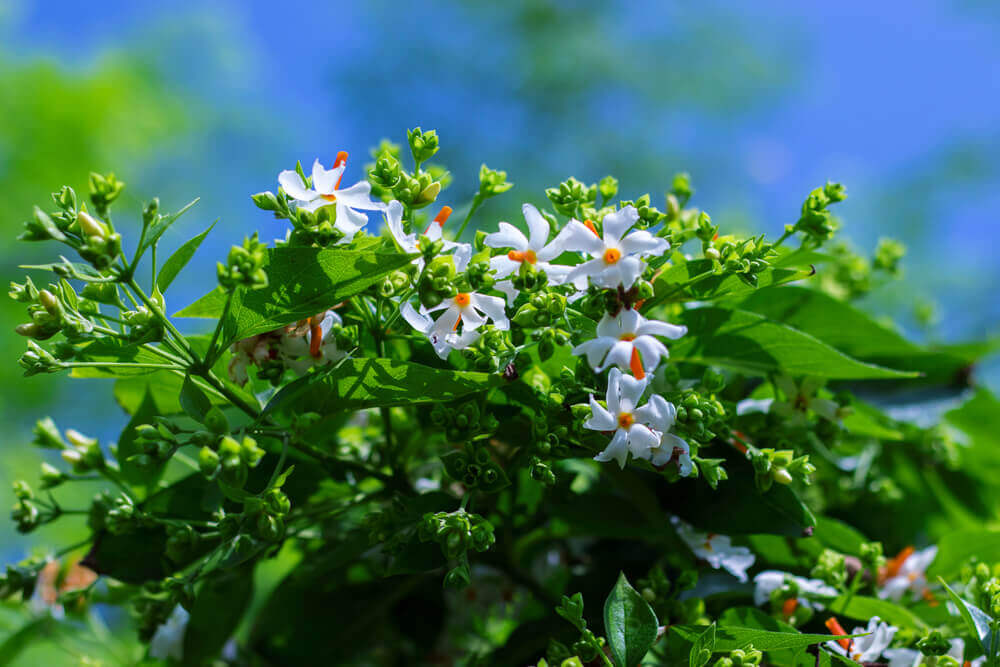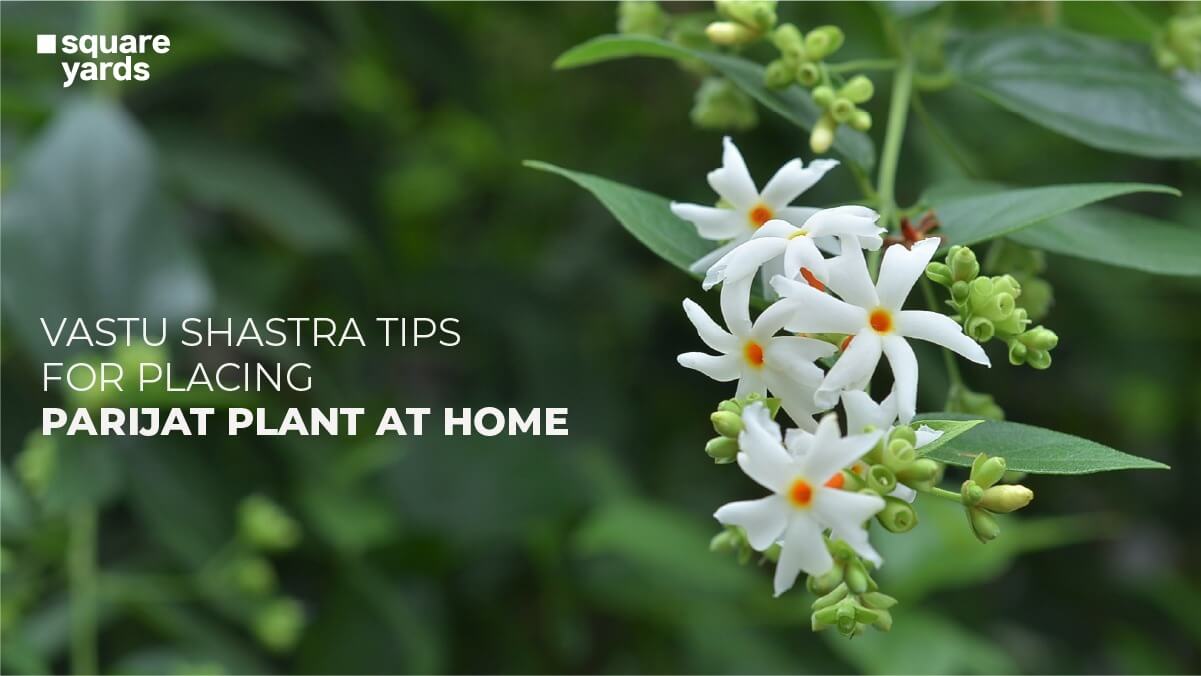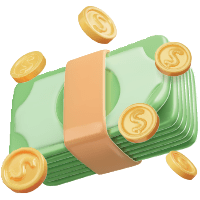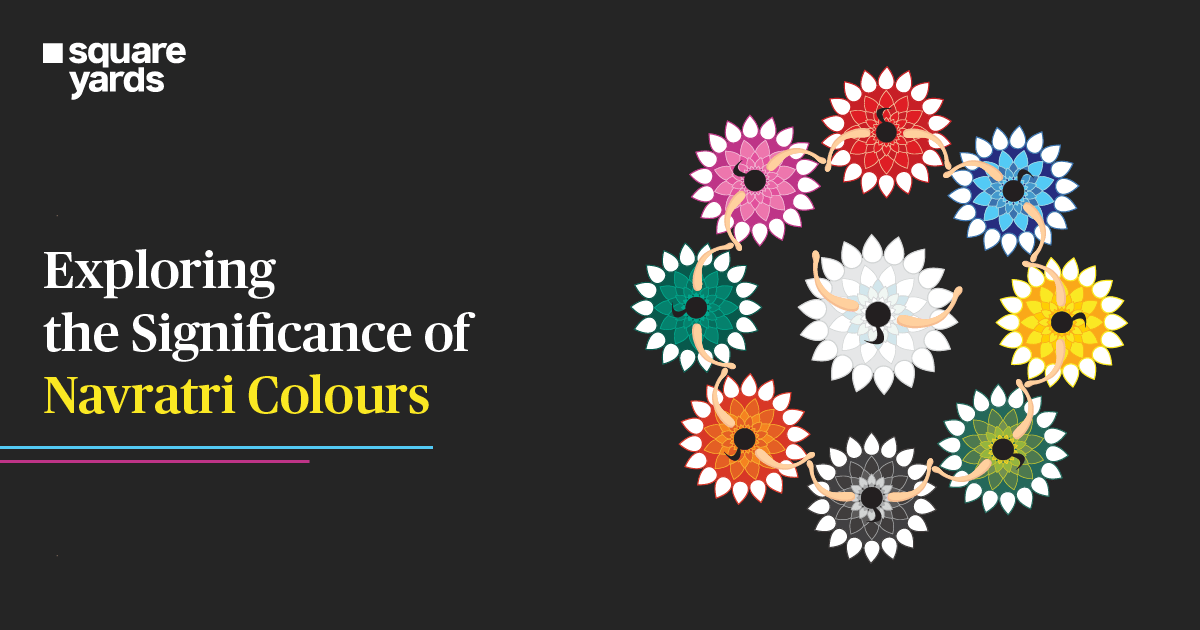Are you aware that plants are no longer just limited to home decor elements? With people being cautious about positive and negative energies at home, Parijat trees have also started holding significance in Vastu Shastra. Like Feng Shui, which encourages growing plants in the living space, Vastu Shastra promotes the same thing to add positivity to your environment. A plethora of tips have been given in Vastu Shastra to place plants and other things in the home in the right direction. Though plenty of plants are considered Vastu-friendly, in this guide, we will focus on the Parijat plant. Also known as Harsingar, the Parijat tree is beautiful, and planting it at home is considered very auspicious. People generally use these plants for worship, but keeping the Parijat Tree at home Vastu is also highly recommended.
So, let us know in detail about the Parijat plant, its importance, the right direction to place it, care and maintenance, and much more.
Table of Contents
- What is Parijat Plant ?
- Right Parijat Plant Vastu Direction for Home
- Vastu Advantages of Including a Parijat Tree in Your Home Decor
- Other Benefits of the Parijat Plant at Home
- Care and Maintenance of Parijat Tree at Home Vastu
- Can we Keep Parijat plant at Home
- The Bottom Line
- Stories you may also like
- FAQ’s on Parijat Tree Vastu
What is Parijat Plant ?

Popularly known as ‘Raat Ki Rani’ or ‘Night Blooming Jasmine’ in English, the Parijat Tree Vastu Shastra is an ornamental plant that boasts enormous medicinal and Vastu potential. These attractive plants are commonly used in homeopathy and Ayurveda and are grown for their foliage and floral charm. The Parijat Tree at home for Vastu bears small white flowers with orange pedicles that start blooming in late September and continue to bloom till December. The plant’s flowers generally bloom in the late evening or night, spreading a strong fragrance nearby.
The uniqueness of this auspicious Vastu Shastra plant is that these plants are very dear to Goddess Laxmi and can truly transform your home into an adobe for her. Yes, you read that right! With this quality, the Parijat plant Vastu shastra brings prosperity and happiness to your house and detaches Vastu defects, if any. When placed in the right direction, these plants communicate positive energy and calm the mind with their sweet aroma.
Now, let us find out in which direction it is right to place the Parijat plant at home for Vastu!
Worried About Your Home Vastu – Have Vastu Consultant Advice for Your Home
Right Parijat Plant Vastu Direction for Home
If you struggle to find the right direction to place the Parijat plant as per Vastu shastra at home, your search ends here. The pointers below will help you know the most suitable direction for your Parijat plant at home.
- As per Vastu Shastra, the Harsingar plant must be positioned in the east or north of your house. By positioning the plant in this direction, the plant will eliminate all the negative energies from your house and bring peace, prosperity, and happiness.
- It is also appropriate to place the Parijat plant in the west or north-west direction of your house.
- Remember not to place Parijat plants in the south of your house because this direction is the direction of Yama, the God of Death.
- You can also place the Parijat plant in Vastu near the temple or the courtyard. This will not only attract massive wealth but will also help you get rid of all your sins.
Once you are done positioning the Parijat plant in the right direction of your home, you must know what benefits it will offer. So, let’s get an answer to this in the upcoming section.
Vastu Advantages of Including a Parijat Tree in Your Home Decor
Besides bringing prosperity and happiness to your living space, the Parijat plant is well known for offering multiple Parijat plant benefits vastu that involve the following:
1. Parijat Plant Eradicates Negative Energy
As per Vastu Shastra’s belief, planting the Parijat plant in your house will surely eradicate the negative vibes from your home. The fragrance of this plant removes mental stress and calms the mind. Moreover, in the area where the Parijat plant is placed, there is a communication of positive vibes, and this is something that every homeowner looks forward to.
2. Invites Goddess Laxmi into the House
Goddess Lakshmi resides in every house that has a parijat plant planted. If you have positioned the plant in the right direction, nothing can stop you from attracting wealth, and you will never face any loss of money. But do you know why it is Maa Lakshmi’s favourite? Well, the plant was in the 11th out of 14th gems that came out during the churning of the ocean, and Maa Lakshmi also came out during the ocean churning. So, this made her love the Harsingar plant.
3. Provides Longevity to House Residents
It is believed that the houses where Rat ki Rani is planted grant a long life for all the residents. Also, the residents get freedom from most of the sins that might create hardships in the near future.
4. Placing it Near the Temple
Planting ‘Rat Ki Rani’ near the temple in your household has great significance because it will help you gain merit. As per Vastu Shastra experts, the Harsingar plant was created during the churning of the ocean, and Indra kept it in the Swarg Vatika. Correspondingly, you can bring this plant home and be free from all flaws.
Other Benefits of the Parijat Plant at Home
Apart from being advantageous in Vastu Shastra, the Parijat plant is also known for providing the following medical benefits:
1. The juice of the Parijat plant’s leaves can be used with honey to cure chronic fever.
2. The stem of this plant can be used to treat snake bites, bronchitis, and joint pain.
3. Flowers of the Parijat plant are used as a medicinal solution for respiratory and gastric complaints.
4. Parijat flowers are highly recommended for diabetic patients.
5. You can use Parijat plant leaves and flowers as immunostimulants.
6. The extract of Parijat flowers can be used to cure stomach pain.
7. The Parijat plant is believed to cure dry cough.
8. The plant can be used for treating malaria.
9. Parijat seeds control dandruff and hair lice.
10. The Parijat plant leaves provide nourishment for the hair.
Care and Maintenance of Parijat Tree at Home Vastu
Tips for managing and maintaining the Parijat plants at your home expect you to take care of the following:
- Soil: Perfectly drained fertile soil is highly preferable for Parijat Plants and that too with high organic matter content. The soil’s pH level must range between 5.6 and 7.4 for healthy plant growth.
- Temperature: The ideal temperature for growing Parijat Plant Vastu Shastra at home is 20°C to 25°C. Note that these plants can not survive for a long period of time in low temperatures.
- Light: Harsingar plants require no less than 6 hours of daily sunlight. You should consider growing these plants in open spaces.
- Water: Standing water in the pot is a big no for Parijat plants at home, Vastu. Therefore, proper water drainage must be provided. Also, watering these plants must be high in the summer and less during the winter. You should always water these plants with 200 ml of water when the top 1 or 2 inches of the soil feel dry.
With these tips, you can maintain the Parijat plants at home for an extended period of time. And this eventually means long-lasting prosperity in your home.
Can we Keep Parijat plant at Home
We can, of course, grow parijat at home. I believe that everyone should have this gorgeous plant at home because it has excellent medical potential. It is true that different plants need to adhere to different Vastu standards. Make sure the parijat plant is located in the north or northeast of the house if you choose to have one there. Subsequently, it will guarantee contentment and assist your home in eliminating negativity.
The Bottom Line
The Parijat tree is a very auspicious tree that is considered to be a symbol of prosperity, peace, and happiness. As per Vastu Shastra, it is believed that having a Parijat tree in your home will bring bundles of goodness and wealth. In short, it is a wonderful gift from nature and you must look forward to adding it to your house if you are a Vastu believer.
Stories you may also like
FAQ’s on Parijat Tree Vastu
In which direction should we plant Parijat?
Planting plants at home not only adds greenery but also purifies the environment, but only if placed in the right direction. As per the Parijat plant at home, Vastu tips, this plant must be planted in the North or east of your house. Moreover, the West and North-West directions are also suitable for their positioning.
Can we keep the Parijat plant at home?
Yes, you can undoubtedly keep the Parijat plant at home as it holds importance as a medicinal plant and is one of the good-to-have Vastu Shastra plants. This plant holds the power to cure diseases like dengue, intestinal infection, and fever. Also, it is believed that Maa Lakshmi resides in the home wherever the parijat plant Vastu Shastra is planted.
Is Parijat auspicious?
Yes, the Parijat plant, or ‘Rat Ki Rani’, is considered auspicious because it is expected to belong to the heavens. Having this plant at home means you will never face any hardships in life and will always remain happy. It is also believed that the Parijat plant was given to the wives of Lord Krishna as a gift to represent love. So, growing it is considered very auspicious for newlywed couples.
What is special about the Parijat plant?
The specialty of the Parijat plant Vastu Shastra lies in the fact that this mysterious plant blooms at night instead of daytime. Not merely this, but after blooming at night, the flowers fall from the branches to the ground just after the first rays of sunlight.
Which plants are not good for home Vastu?
As per Vastu Shastra, the top 5 dangerous plants that are not good for your home involve Cactus, Bonsai, Mehendi, dead plants, and cotton plants.
Does Parijat Tree Attract Snakes
It is believed that snakes are drawn to the Parijat tree (Nyctanthes arbor-tristis) is unsupported by any particular data or body of scientific research. Rather than being based on biological truths, the idea that particular trees attract snakes may have its origins in cultural or folklore.







































































